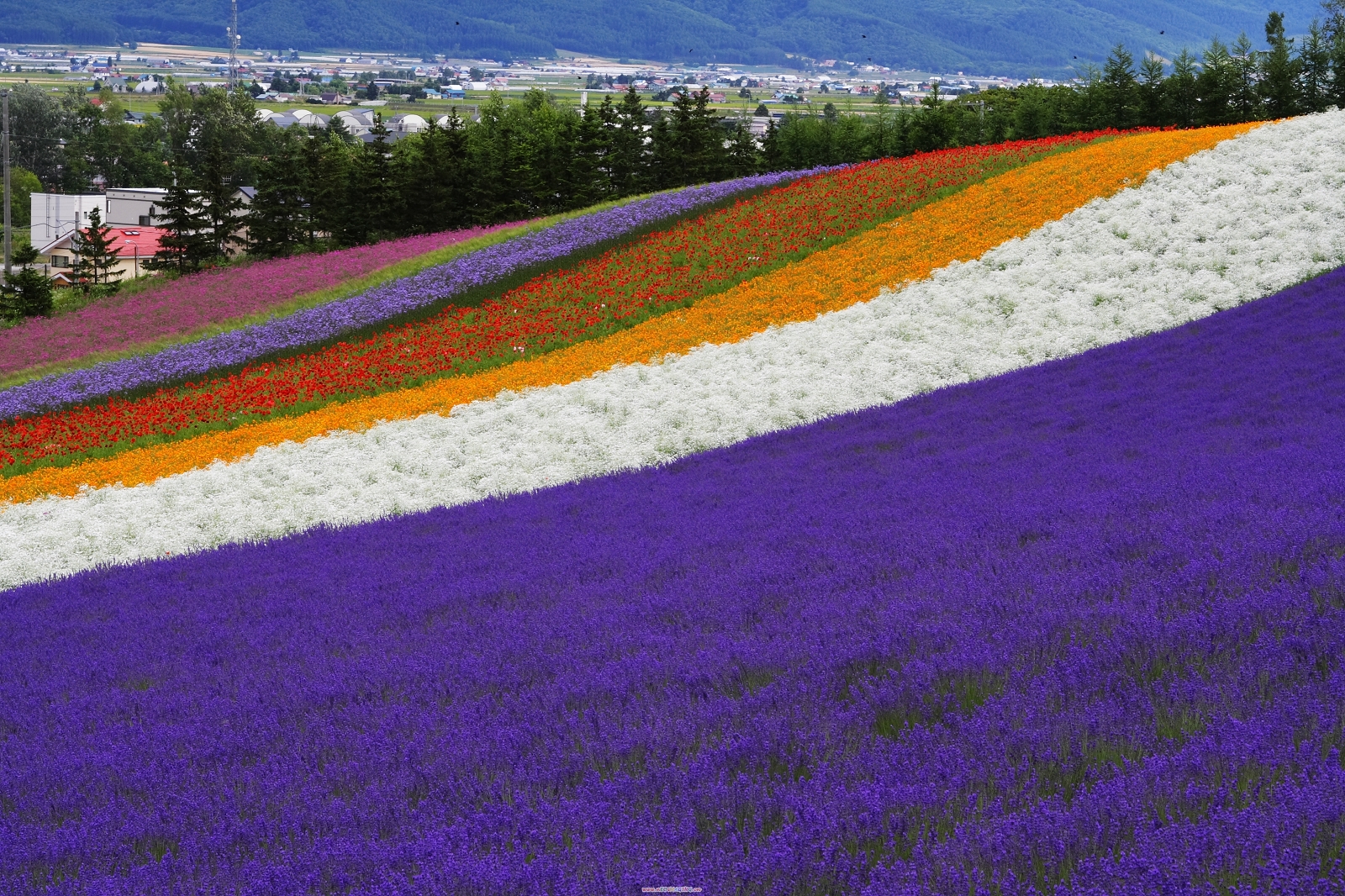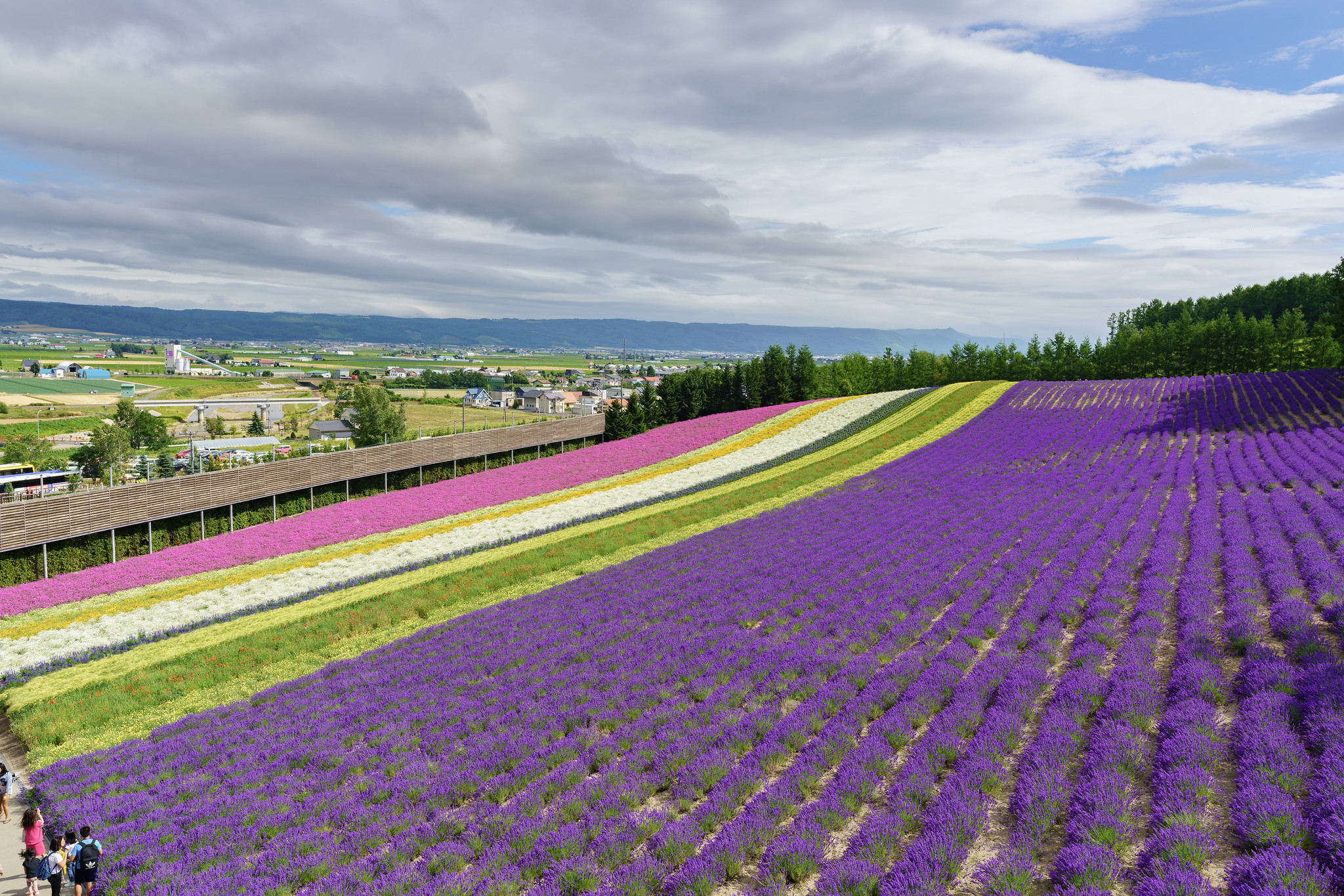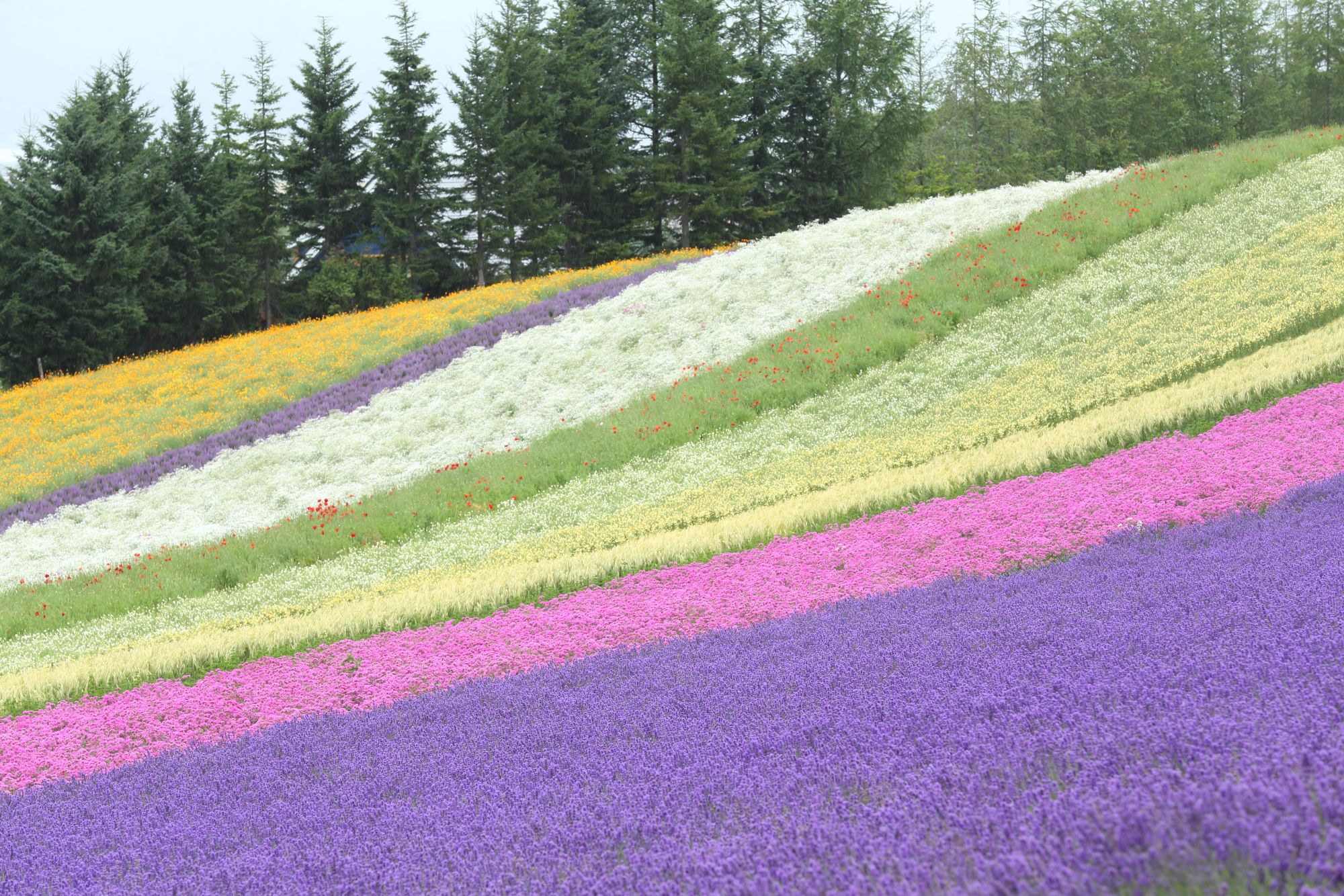Discover Furano’s Lavender Fields
Located in the heart of Hokkaido, this region is known for its vast lavender fields to which visitors flock every summer.

© JOMC
Located a two-hour train ride away from Sapporo, the largest city on Hokkaido—Japan’s northernmost island—are the small valleys of the commune of Furano. When summer comes, they take on a soft mauve colour. The area is one of Japan’s main lavender-growing regions, and the plants flower every year between early July and mid-August.
Lavender ice cream, lemonade, and tea
Over an area of several kilometres, multiple farms that specialised in the production of these melliferous (honey-producing) plants faced a considerable drop in demand in the 1970s, when low-cost lavender began to be imported into Japan. These farms were therefore converted into tourist attractions, selling various by-products like lavender-flavoured ice cream, cake, lemonade, and tea, or even mauve-coloured clothing.
To get to Furano from Sapporo, there are two options: the Furano Lavender Express or the Furano Biei Norokko Express, of which the latter only runs from June until September. Then, to see these lavenda no mori, which translates as ‘lavender fields’, it is best to use a vehicle as the different farms are a few kilometres apart, making it difficult to travel between them on foot. Alternatively, it is possible to board a tourist bus that stops at the different farms, but this option is particularly crowded in the high season.
More information on the lavender fields can be found on the Furano tourist office’s website.

© DR

© JOMC

© JOMC
TRENDING
-
The Tattoos that Marked the Criminals of the Edo Period
Traditional tattoos were strong signifiers; murderers had head tattoos, while theft might result in an arm tattoo.

-
Paris, Tokyo: Robert Compagnon
With his co-chef and talented wife, Jessica Yang, Robert Compagnon opened one of the top new restaurants in Paris: Le Rigmarole.
 3:31
3:31 -
Chiharu Shiota, Red Threads of the Soul
Last year, more than 660,000 people visited the retrospective 'Chiharu Shiota: The Soul Trembles' exhibit at the Mori Art Museum.

-
‘Before Doubting Others, Doubt Yourself. Who Can Truly Say a Dish Isn’t What It Used to Be?’
In ‘A Non-Conformist’s Guide to Surviving Society’, author Satoshi Ogawa shares his strategies for navigating everyday life.

-
The Story of Sada Yacco, the Geisha who Bewitched Europe
Described by Dazed magazine as the first beauty influencer, she has been restored to her former glory since 2019.





